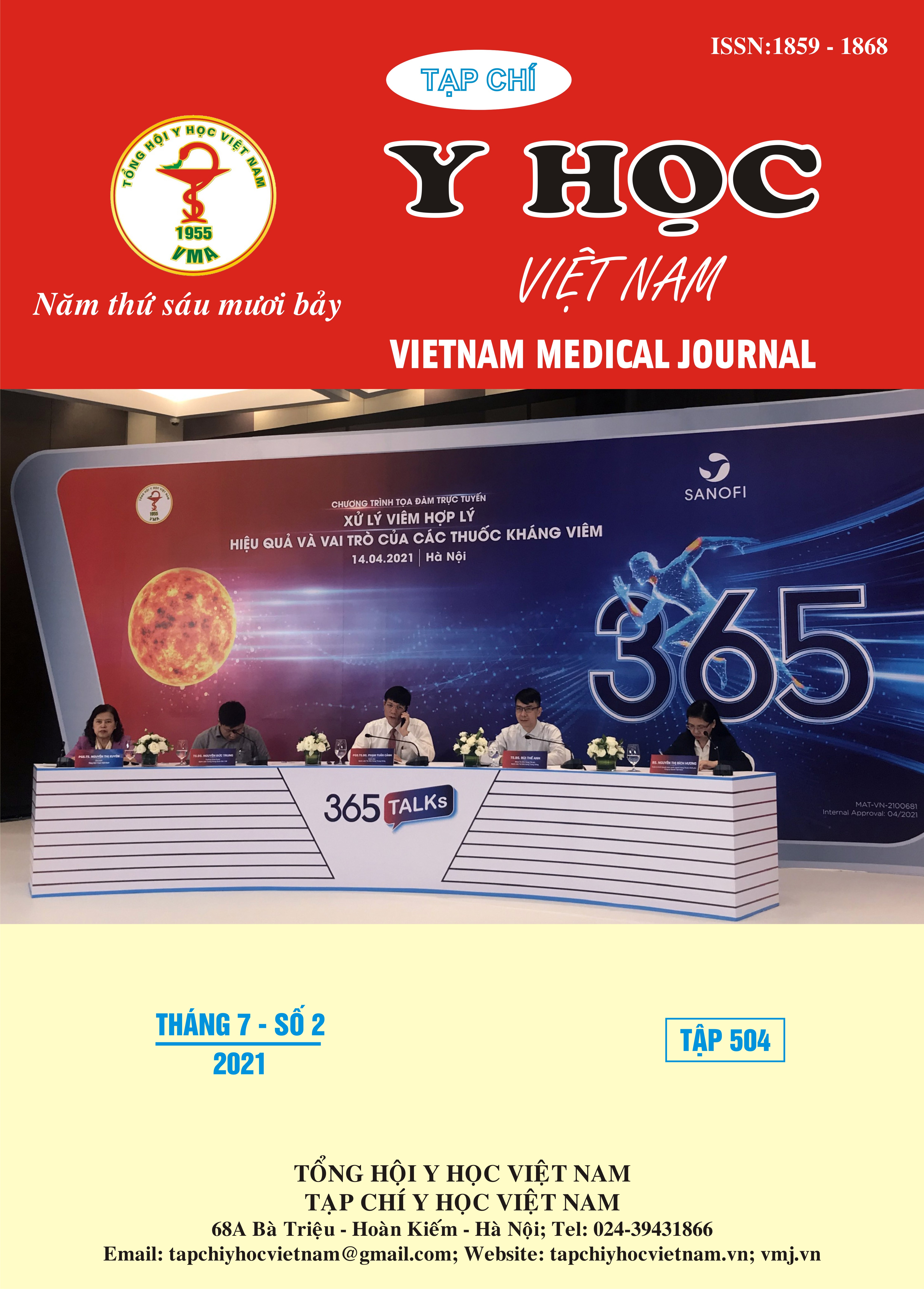TÌNH TRẠNG DINH DƯỠNG CỦA BỆNH NHÂN UNG THƯ ĐIỀU TRỊ NỘI TRÚ TẠI BỆNH VIỆN QUA MỘT SỐ PHƯƠNG PHÁP ĐÁNH GIÁ
Nội dung chính của bài viết
Tóm tắt
Mục tiêu: Xác định tỉ lệ và các mức độ suy dinh dưỡng (SDD) của bệnh nhân (BN) ung thư bệnh viện đa Khoa Long An theo chỉ số khối cơ thể (BMI), Albumin và lympho bào máu. Xác định các yếu tố liên quan đến SDD theo BMI. Phương pháp nghiên cứu: Nghiên cứu cắt ngang mô tả, trên 118 BN ung thư điều trị nội trú tại khoa Ung bướu, Bệnh viện Đa khoa Long An, từ tháng 4 -9/2020; Có chẩn đoán ung thư, có xét nghiệm về Albumin máu, lympho bào máu. Kết quả: Tuổi trung vị BN (66 tuổi), nam 61%; sống tại nông thôn 63,5%. Đánh giá theo lympho bào máu, tỷ lệ 72,9% SDD (nặng 17%; nhẹ và vừa 56,9%). Đánh giá theo Albumin, tỷ lệ 70,3% SDD (nặng 8,5%; nhẹ và vừa 61,8%). Đánh giá theo BMI, tỷ lệ 55,1% SDD (nặng 19,5%; nhẹ và vừa 35,6%). Yếu tố nơi chốn, giảm chức năng vận động và albumin có liên quan đến SDD theo BMI. Người ở thành thị ít bị SDD hơn nông thôn OR=0,5 (KTC95% 0,2-0,9). Những BN bị giảm chức năng vận động mắc SDD cao gấp 3,2 lần so với người không bị giảm chức năng vận động (OR=3,2, KTC95% (1,5-6,8)). BN có albumin <35g/l mắc SDD cao gấp 2,4 lần so với người có albumin ≥35g/l (OR=2,4 (KTC95% 1,1-5,4)). Kết luận: Đa số BN ung thư bị SDD. Cần tăng cường tư vấn, can thiệp dinh dưỡng kịp thời, đầy đủ. Cần phối hợp nhiều phương pháp đánh giá dinh dưỡng khác nhau để kịp thời phát hiện sớm tình trạng SDD của BN.
Chi tiết bài viết
Từ khóa
ung thư, SDD, BMI, Albumin, lympho bào máu
Tài liệu tham khảo
2. Sánchez-Lara K, Ugalde-Morales E, and Motola-Kuba D (2013) "Gastrointestinal symptoms and weight loss in cancer patients receiving chemotherapy". British Joural of Nutrition, 109(5), page 894-897.
3. Trịnh Hồng Sơn, Nguyễn Bá Anh, Lê Minh Hương, Nguyễn Thanh Long (2013) "Đánh giá tình trạng dinh dưỡng của ngưòi bệnh trước mổ ung thư dạ dày". Y học thực hành 884- số 10, 3-7.
4. Tangvik Tell GS RJ, Guttormsen AB et al (2015) "Nutritional risk profile in a university hospital population. Clin Nutr 34, 705-711".
5. WHO (2004) "Appropriate body-mass index for Asian populations and its implications for policy and intervention strategies". The Lancet, Vol 363, 157-463.
6. Zhang, X, Sharma SV Pang L, Li R, Nyitray AG, Edwards BJ (2019) "Prevalence and factors associated with malnutrition in older patients with cancer". Journal of Geriatric Oncology, 10, 763-769.
7. Gunarsa RG, Simadibrata M, Syam AF, Setiati S, Rani AA (2011) "Total Lymphocyte Count as a Nutritional Parameter in Hospitalized Patients". The Indonesian Journal of Gastroenterology, Hepatology, and Digestive Endoscopy, Volume 12, Number 2, pp 89-94.
8. Kuzuya M, Enoki H, Okada K, Iguchi A (2007) "Is serum albumin a good marker for malnutrition in the physically impaired elderly?". Clinical Nutrition 26, 84-90.


